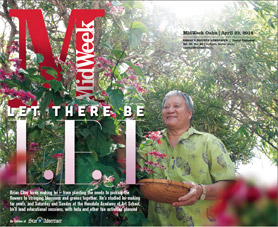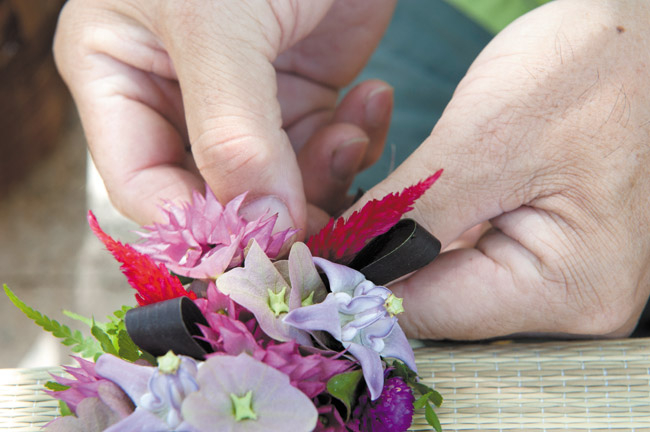Let There Be Lei
“It’s just a matter of economics,” says Choy, who notes that even an “expensive” lei will net the maker only $10 or $15. “A lot of lei makers have stopped selling. We just make them for ourselves and a few friends or family. It just doesn’t make sense.”
Even with the lack of top-level shows and the threatening economics of lei-making, Choy says the future of the art is better than when he started. For this he thanks hula and the wide variety of its participants.
“A lot of local halau make their own lei because they want a consistent lei. The older, traditional halau require their students to make everything – their own implements, their own lei. That makes sense.”
Then there are the visiting halau that come to Hawaii and take the art home with them.
“Hula demands lei, and when I teach my lei classes, every so often I get Japanese students and they are good lei makers. They learn the skill and make their own lei for dancing, even if they are in Japan.”
What gets Choy going after four decades is the same thing that gets him excited during that first class: making a beautiful lei. It’s the entire process he enjoys: planting the flowers, collecting the right pieces, understanding what makes them grow and then tying the lei. The one thing he doesn’t enjoy is defending his plants from the “*@%&*!! feral chickens.” Choy donated the lei garden to the museum and continues to maintain it.
Choy says the purpose of the Celebration of Hawaiian Lei Making is to inspire others.
“I want to make people aware that there are other ways to make a lei from what they think of as the traditional lei,” he explains.
Similar to his elementary school days, when students would maintain a garden and then proudly share the crops with family, Choy would like to see schools adopt the same program for lei making. In his mind, students would grow their own plants, make lei and present them to family and friends. While doing so, the students would learn botany, agriculture, history and culture.
As Choy might say, it makes sense.
Celebration of Hawaiian Lei Making is April 26 and 27, from 10 a.m. to 3:30 p.m. Lei-making will happen both days. Lei-making Jeopardy is set for Saturday at 12:30 p.m., with the talk-story/planting feature beginning at 1:30. Hula is Sunday from 12:30-1 p.m. Admission is free. For more information about the event or other exhibits, call 532-8700 or go to info@honolulumuseum.org.







